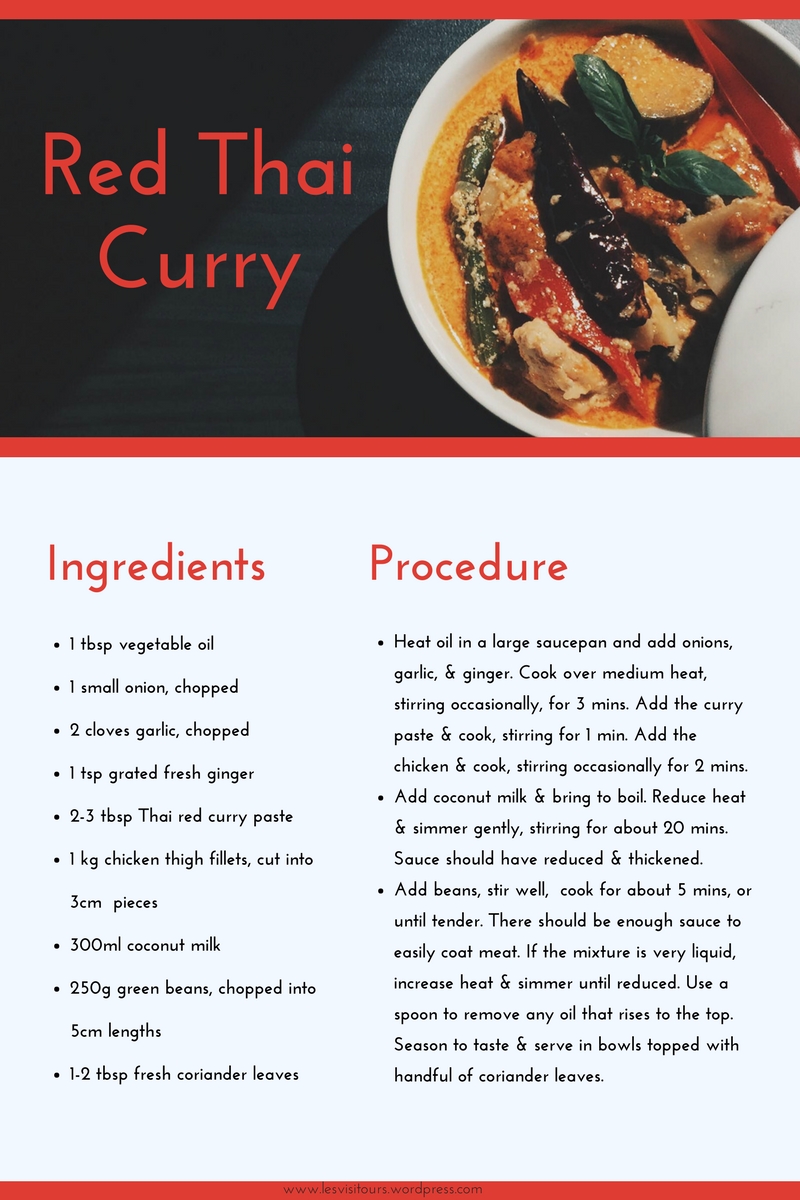No matter where you go if you don’t taste the local food it’s almost like you’ve never been there! Asian food, in general, needs little introduction in the western world but first timers in Asia might be scared and full of questions.
Thai cooking places emphasis on lightly prepared dishes with strong aromatic components and a spicy edge.
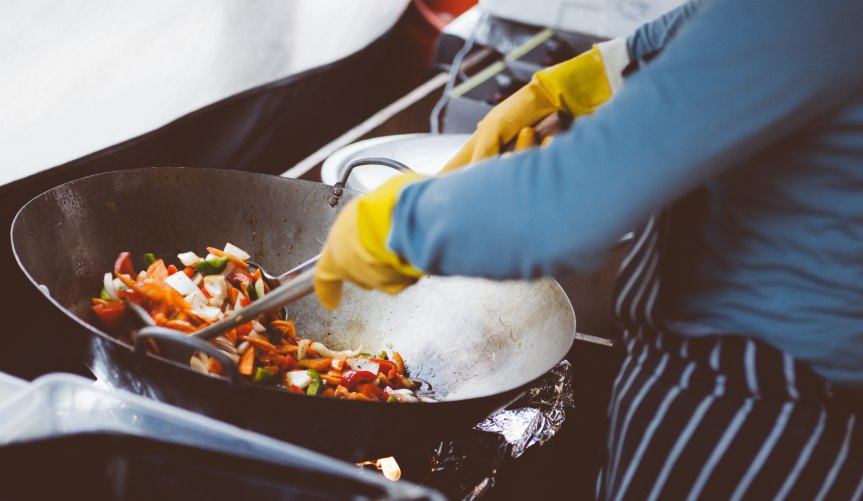
Thai food is known for its enthusiastic use of fresh (rather than dried) herbs and spices. Common flavors in Thai food come from garlic, galangal, coriander/cilantro, lemongrass, shallots, pepper, kaffir lime leaves, shrimp paste, fish sauce, and chilies. Palm sugar, made from the sap of certain Borassus palms, is used to sweeten dishes while lime and tamarind contribute sour notes. Meats used in Thai cuisine are usually pork and chicken, and also duck, beef, and water buffalo. Traditionally, fish, crustaceans, and shellfish play an important role in the diet of Thai people.
Certain insects are also eaten in Thailand, especially in Isan and in the north. Many markets in Thailand feature stalls which sell deep-fried grasshoppers, crickets (ching rit), bee larvae, silkworm (non mai), ant eggs (khai mot) and termites. Most of the insects taste fairly bland when deep-fried, somewhat like popcorn and prawns. But when deep-fried together with kaffir lime leaves, chilies, and garlic, the insects become an excellent snack to go with a drink.

Thai meals typically consist of rice (Khao in Thai) with many complementary dishes shared by all. The dishes are all served at the same time, including the soups, and it is also customary to provide more dishes than there are guests at a table. A Thai family meal would normally consist of rice with several dishes which should form a harmonious contrast of flavors and textures as well as preparation methods.
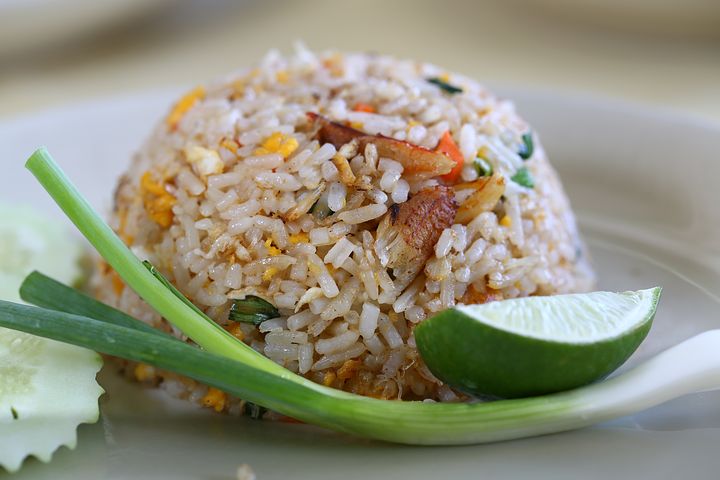
Thai farmers historically have cultivated tens of thousands of rice varieties. The traditional recipe for a rice dish could include as many as 30 varieties of rice.
- At Thungwualaen beach, near Chumpon city we enjoyed Tom Yum soup. Waiter set up a table only for us right on the white sand beach and while we were eating waves were splashing our legs. Truly amazing and very romantic experience!
Thai food was traditionally eaten with the hand while seated on mats or carpets on the floor or coffee table in the upper-middle-class family, customs still found in the more traditional households. Today, however, most Thais eat with a fork and spoon. Chopsticks were foreign utensils to most ethnic groups in Thailand with the exception of the Thai Chinese.
- At Koh Phangan island we’ve joined the local family on a fishing trip. The catch was later prepared for all of us by them. We ate red curry, bbq fish, and tom yum. Everything was good, but curry and tom yum were so spicy that we couldn’t eat more than few spoons.
An ingredient found in many Thai dishes and used in every region of the country is nam pla, a clear fish sauce that is very aromatic. Fish sauce is a staple ingredient in Thai cuisine and imparts a unique character to Thai food. Fish sauce is prepared with fermented fish that is made into a fragrant condiment and provides a salty flavor.
Nam phrik is Thai chili paste. Each region has its own special versions.
The soy sauces and oyster sauce which are used in Thai cuisine are of Chinese origin.
- All over Asia, we’ve eaten Asian style barbecue. Usually, you pay 200-300 baht (5-8euro) and get all you can eat ingredients.
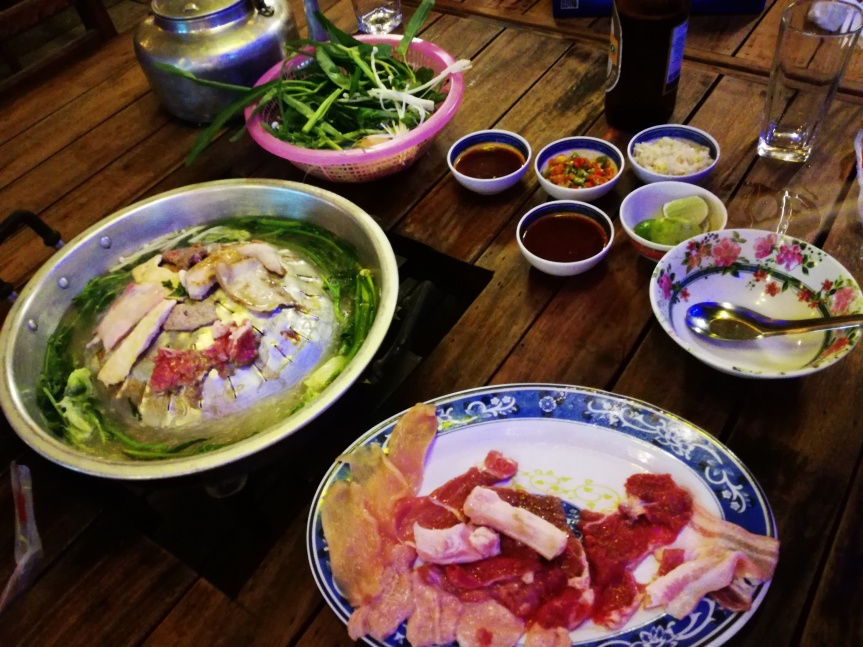
Although most Thai meals finish with fresh fruit, sometimes sweet snacks, often eaten between meals, will also be served as a dessert.
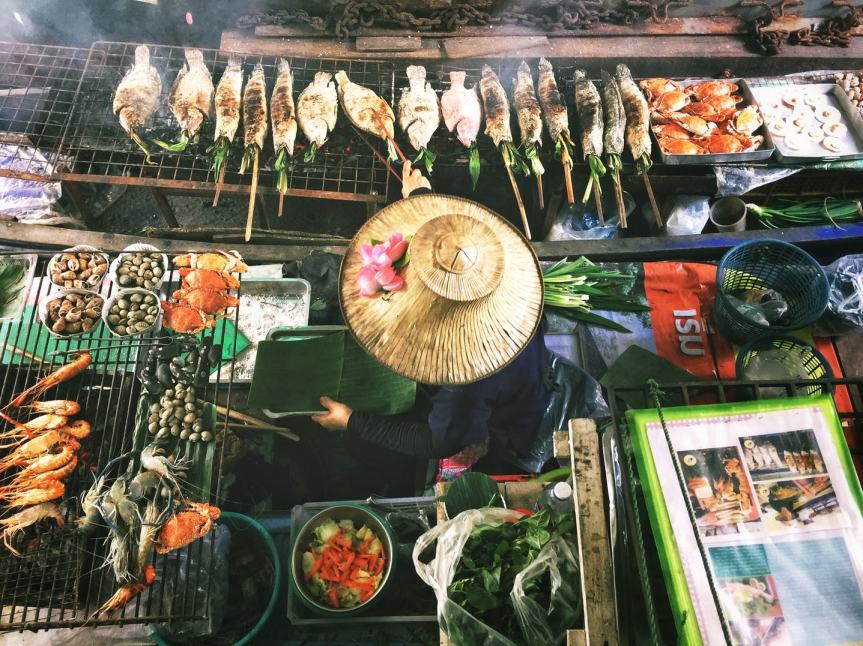
- Tom Yum Goong (Spicy Shrimp Soup)
- Som Tum (Spicy Green Papaya Salad)
- Tom Kha Kai (Chicken in Coconut Soup)
- Gaeng Daeng (Red Curry)
- Pad Thai (Thai style Fried Noodles)
- Khao Pad (Fried Rice)
- Pad Krapow Moo Saap (Fried Basil and Pork)
- Yam Nua (Spicy Beef Salad)
